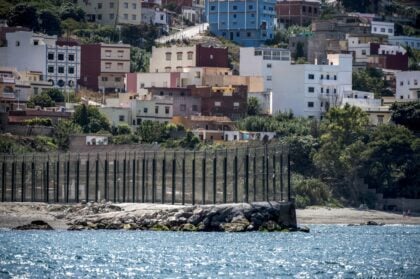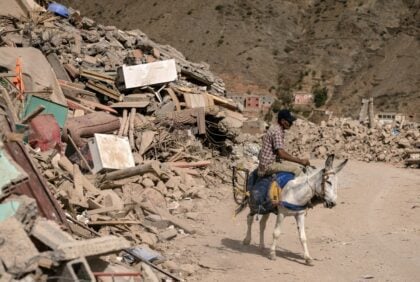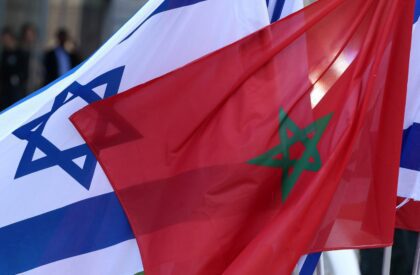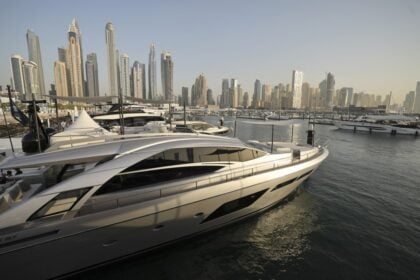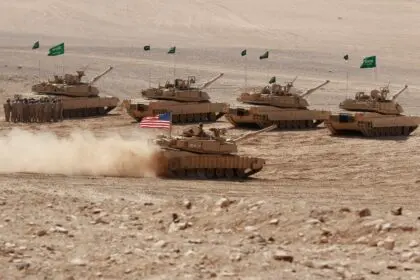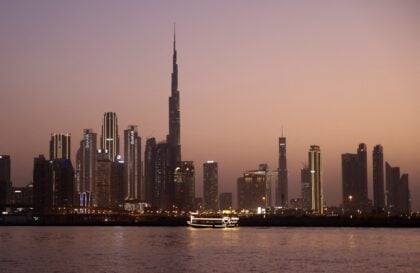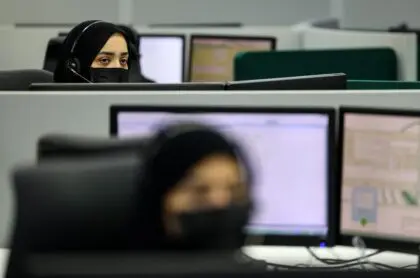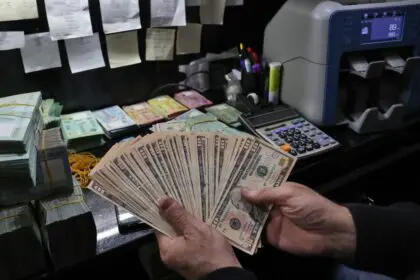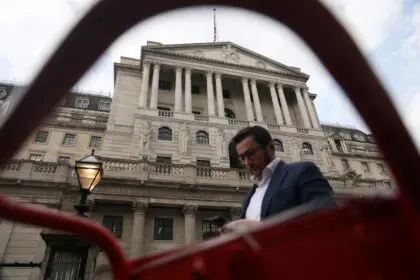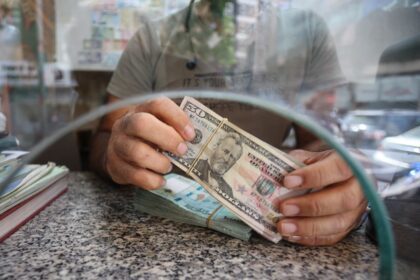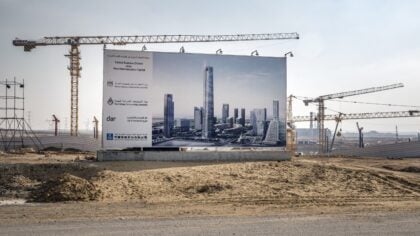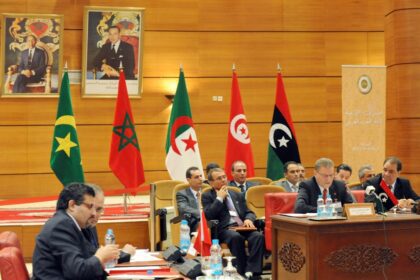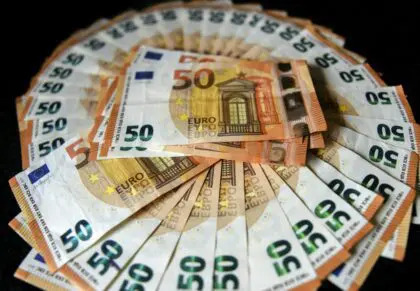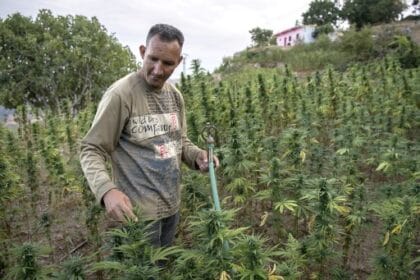
Introduction
According to the World Factbook of the CIA, Morocco has capitalized on its proximity to Europe and relatively low labor costs to work towards building a diverse, open, market-oriented economy. Key sectors of the economy include agriculture, tourism, aerospace, automotive, phosphates, textiles, apparel, and subcomponents. Morocco has increased investment in its port, transportation, and industrial infrastructure to position itself as a center and broker for business throughout Africa. Industrial development strategies and infrastructure improvements – most visibly illustrated by a new port and free trade zone near Tangier – are improving Morocco’s competitiveness.
In the 1980s, Morocco was a heavily indebted country before pursuing austerity measures and pro-market reforms, overseen by the IMF. Since taking the throne in 1999, King MOHAMMED VI has presided over a stable economy marked by steady growth, low inflation, and gradually falling unemployment, although poor harvests and economic difficulties in Europe contributed to an economic slowdown.
To boost exports, Morocco entered into a bilateral Free Trade Agreement with the US in 2006 and an Advanced Status agreement with the EU in 2008. In late 2014, Morocco eliminated subsidies for gasoline, diesel, and fuel oil, dramatically reducing outlays that weighed on the country’s budget and current account.
Subsidies on butane gas and certain food products remain in place. Morocco also seeks to expand its renewable energy capacity with a goal of making renewable more than 50% of installed electricity generation capacity by 2030.
The World Bank expects economic performance to improve in the medium term enabled by sound fiscal and monetary policies, more consistent sector strategies, and an improved investment environment, all of which are aimed at supporting gradual competitiveness gains, The World Bank expects growth to fall to 2.9 percent in 2019 due to low projected increase of agricultural output after two exceptional years, growth will stabilize around an average of 3.6 percent over the medium term.
Gross Domestic Product
Morocco’s economy grew slowly in 2018, despite unexpectedly positive growth in grain production, with the gross domestic product (GDP) growth rate dropping slightly from 3.5 per cent in the first quarter of 2017 to 3.2 per cent in the same quarter in 2018. The decline in economic activity is primarily due to the sharp decline in the growth of agricultural added value from 14.8 per cent in the first quarter of 2017 to 2.5 per cent in the first quarter of 2018.
This decline was only partly compensated by non-agricultural performance, which increased by 3.4 per cent (compared with 2 per cent in the first quarter of 2017), driven primarily by the double recovery in secondary and tertiary sector activities. This increase was particularly notable in the extractive industries, as a result of the rise in phosphate production and exports.
As rainfall returns to normal rates, the World Bank predicts that agricultural GDP will decline in 2019, leading to a decline in overall GDP growth to 2.9 per cent. This decline is due to the rainfall intensity that leads to destroying the seasonal corps. However, non-agricultural GDP is expected to continue its positive performance, bolstered by the growing dynamism of the transformative industries and service sectors. The automotive industry, in particular, has benefited from large foreign investments.
| Indicators | measuring unit | 2016 | 2017 | Change ± |
| GDP (at constant 2010) | Billion US$ | 114.660 | 119.347 | 4.687 |
| GDP growth (annual) | % | 1.1 | 4.1 | 3 |
| GDP per capita (constant 2010) | US$ | 3,205 | 3,292 | 87 |
| GDP (at current value) | Billion US$ | 103.345 | 109.709 | 6.364 |
Source: World Bank.
Industry
Morocco’s economy was historically based on agriculture, which still accounts for 41 percent of employment, but industry employs 22 percent of workers (the rest are in services). The industrial sector contributed 31.6 percent to Morocco’s GDP in 2010. Industrial production grew by 4.4 percent in 2010, but there are rapid fluctuations, even on a quarterly basis. Between 2000 and 2012, the growth in Moroccan industrial production averaged 3.5 percent per quarter, with an all-time high of 9.4 percent in March 2000 and a low of -4.4 percent in December 2008 (see Trading Economics for data).
The key sectors are:
Mining, a major foreign-exchange earner (USD 4.2 billion in 2011). Morocco has 75 percent of the world’s phosphate reserves and is the top world exporter and third-largest producer. In 2011, phosphate production grew by 5.3 percent, but the world price of phosphates was increasing, so the value of phosphate exports increased by 39 percent and of phosphate-derived products by 29 percent. Other minerals include antimony, barite, copper, cobalt, lead, iron ore, manganese, silver, salt, and zinc.
Manufacturing, of which the biggest part is in textiles and clothing, exported mainly to the European Union, with France importing 27.6 percent of the ready-to-wear clothing, 46 percent of the hosiery, and 28.5 percent of the basic textiles produced by Morocco. Heavy industry serves primarily the local market, supplying fertilizers, building materials (asphalt and cement), cars and tractors, and oil refining.
Export-oriented industries are in light manufacturing: food and beverages (canned fish and fruit, wine), metals, and leather products. The manufacturing sector accounts for about 15 percent of GDP, although it is rising steadily. Renault Dacia builds 400,000 cars a year, with a value of USD 2 billion in 2011 (data from Economy Watch).
Agriculture

For the last ten years, agriculture has accounted for between 15 and 17 percent of Morocco’s GDP. The figure for 2011 was 15 percent. The annual amount varies partly according to climatic conditions that affect agricultural production. 78 percent of the country has an average annual precipitation of less than 250 millimetres, 15 percent has between 250 to 500 millimetres, and 7 percent has more than 500 millimetres; precipitation can change rapidly from year to year. Morocco received large amounts of rainfall during the 2008-2009 growing season, far above normal, but rainfall was poor in 2007 and imports rose by 14 percent in consequence (food imports rose by 48 percent).
Employment in agriculture made up 41 percent of total employment in 2008, but the amount of arable land available has fallen from 0.38 hectares per person in 2008 to 0.25 hectares in 2009.
In 2009, agricultural land covered 67 percent of the total land area, of which 4.6 percent is irrigated. Despite that apparently low figure, agriculture is by far the biggest user of water, accounting for 84 percent of water withdrawal.
Arable land (land under temporary crops, such as grain and vegetables) is 18 percent of land area. Land under permanent crops (e.g., vines and fruit, nut, and olive trees, but not timber forest) is 2.2 percent of total land area. The rest of the agricultural land is permanent pasture. Between 11 and 12 percent of the land surface is covered with forest.
The major cereal crops are barley (50 percent), wheat (40 percent), and maize (9 percent). Four percent of the arable land is sown to pulses.
Agricultural produce is shipped to two distinct markets, the home market and the export market, and the commodities are quite different. In 2010, the top agricultural product by value was olives (and olive oil); preserved olives were the third largest export by value. The second largest product by value was chicken meat, followed by wheat and beef, all of which were consumed virtually entirely in the local market. Then came tomatoes, the largest export crop by value.
Moroccan agriculture does not, however, produce enough food to feed the country: the top three largest imports of foodstuffs in 2010 were wheat, maize, and sugar. Tea, which is drunk in large quantities, was the sixth largest foodstuff import. Production of the top three crops (barley, wheat and sugar beet) is much more affected by drought than is meat production. Only egg production fell dramatically after the 2007 drought. These data are from the World Bank and the UN Food and Agricultural Organization.
Poverty
Measured against the national poverty line, Morocco experienced a significant reduction in poverty, from 8.9 per cent in 2007 to about 4.8 per cent in 2013. Similarly, when measured using the international extreme poverty line of $1.90 per person per day (2011 purchasing power parity), poverty was almost eliminated in 2013 (about 1 per cent). When measured using the lower middle-income poverty line of $3.20 per person per day, poverty declined to 7.7 per cent.
Although economic growth over the first decade of the millennium favoured the poor, the rural-urban poverty gap remained high in 2013, and the average consumption of urban households was almost twice that of rural households. From 2007 to 2013, household consumption growth in the lower classes was positive and above average: 4 per cent compared to an average growth rate of 3 per cent. In addition, consumption growth in urban areas (about 3.5 per cent) was higher than in rural areas (2.8 per cent).
Overall inequality slightly declined, though not in all regions of the country. The Gini coefficient fell slightly between 2007 and 2013 from 40.7 to 39.5. This was generally due to two parallel trends: cross-regional development and increased inequality within some regions. In fact, inequality in some regions (such as Rabat-Salé-Kénitra in the north-west) increased from 39.9 to 44.2 and in southern regions from 35 to 40.2, whereas it declined in other areas (such as Casablanca, Marrakech and Souss-Massa in the west).
| Indicators | Number of Poor (thousand) | Rate (%) |
| National Poverty Line | 1,623.6 | 4.8 |
| International Poverty Line 8.2 in Moroccan dirham (2013) or US$1.90 (2011 PPP) per day per capita | 345.5 | 1.0 |
| Lower Middle Income Class Poverty Line 13.9 in Moroccan dirham (2013) or US$3.20 (2011 PPP) per day per capita | 2,605.5 | 7.7 |
| Upper Middle Income Class Poverty Line 23.8 in Moroccan dirham (2013) or US$5.50 (2011 PPP) per day per capita | 10,587.5 | 31.3 |
Poverty Indicators in 2013. Source: The World Bank.
International Market Position
Morocco was ranked 71st out of 137 countries covered by the Global Competitiveness Index 2017-2018, its highest position since the index started in 2007. The country has a good level of public health, a strong primary education system and a favourable macroeconomic environment supported by stable institutions.
Over the past decade, infrastructure has improved dramatically, jumping from 71st place in the 2010 index to 54th today. Transport developments were widespread but were particularly significant for ports (now ranked 32nd, a jump of 30 places over the same period) and roads (43rd, a 45-place jump). Rail infrastructure will be enhanced with the opening of the Tangier-Casablanca line in 2019.
Furthermore, the improved infrastructure and decreased average import tariff from 18.9 per cent to 10.5 per cent has contributed to Morocco’s integration into international trade, increasing the overall level of efficiency in its commodity market (58th, ten places higher than 2007). The country’s main challenges remain its innovation environment (94th), higher education and training (101st) and labour market efficiency (120th) – the only areas where there is a gap with developed economies.
| Indicator | Rank (out of 138) 2016–2017 | Rank (out of 137) 2017–2018 | Change in rank ± |
| Institutions | 50 | 49 | 1 |
| Infrastructure | 58 | 54 | 4 |
| Macroeconomic environment | 49 | 55 | -6 |
| Health and primary education | 77 | 81 | -4 |
| Higher education and training | 104 | 101 | 3 |
| Goods market efficiency | 64 | 58 | 6 |
| Labor market efficiency | 124 | 120 | 4 |
| Financial market development | 83 | 72 | 11 |
| Technological readiness | 81 | 82 | -1 |
| Market size | 55 | 53 | 2 |
| Business sophistication | 76 | 69 | -7 |
| Innovation | 96 | 94 | 2 |
| Global Competitiveness Index | 70 | 71 | -1 |
Source: Global Competitiveness Index 2016/2017 and 2017/2018
Infrastructure

Although the Moroccan economy has relied on exports for centuries, the agricultural and mineral trade developed greatly during the colonial period, with the development of new ports (notably Casablanca) and a new capital (Rabat) on the coast.
The role of the colonial rulers in creating the infrastructure to support this was provocatively asserted by King Hassan, who wrote in his autobiography ‘Those who assert that in the years between 1910 and 1935, “France turned Morocco into an underdeveloped country” know perfectly well that they are lying.’ While this is true, the Moroccan infrastructure has developed rapidly since independence, particularly in the most recent decades.
Today Morocco is the largest exporter of phosphate in the world, has a large export industry, and is a market for mass tourism. All this needs a well-developed infrastructure.
Roads
In 2009, there were 58,216 kilometres of roads, of which 70.3 percent were paved (equivalent figures for 1990: 59,522 kilometres and 49 percent, see World Bank). Road density is 13 kilometres of road per 100 square kilometres of land area. Important new roads are the coastal motorway and the 1,416-kilometre highway from Oujda to Agadir.
Railways
In 2010, there were 2,109 kilometres of track, including the Tangier-Casablanca high-speed line, carrying 4,398 million passengers (equivalent figures for 1980: 1756, 3,787, and 935) and 5,572 million tonnes of goods (equivalent figures for 1980: 1756, 3,787 and 935).
Seaports
Morocco’s rapidly growing trade can be measured by calculating the flow of twenty-foot equivalent seaborne container units (TEUs), the size of a standard-size container. The container port-traffic in Morocco was 2,058,430 TEUs in 2010; in 2000 it was 328,808 TEUs. About half of the international traffic goes through the ports of Casablanca and Mohammedia. The third major port is Tangier, which is expanding rapidly. Casablanca is one of the largest artificial ports in the world and handles much of the phosphate exports.
Air transport
The Office Nationale des Aeroports runs 17 public civilian airports, of which the biggest is Mohammed V International Airport at Casablanca-Nouaceur, which has three terminals and two runways and handled 7,245,508 passengers in 2010.
The national-flag carrier, Royal Air Maroc (RAM), was established in 1957 and now has a fleet of 46 planes flying to 86 destinations. It has three subsidiaries, Atlas (2004, 11 planes, 23 destinations), Jet4U (2006, five planes, 13 destinations), and Air Arabia Maroc with four planes.
Air freight totalled 11,272 million tonne-km in 2010. Air passengers carried were 8,971,295 in 2010.
Energy
Morocco’s economic expansion has brought a rapid increase in the demand for energy. Electricity consumption rose steeply between 2005 (14.2 billion kilowatt hours generated) and 2012 (21.5, figures Index Mundi). Electric power is produced almost entirely from fossil fuels; less than 20 percent of electricity production was generated from non-renewable sources (hydroelectric power from Morocco’s many dams made up 16 percent of the total) (US Energy Information Administration).
Morocco has only small oil and gas reserves. At the end of 2012 oil reserves were evaluated at 684 million barrels (bbl) and gas reserves at 511 billion cubic feet (bcf). The equivalent figures for Algeria were 12,200,000 bbl and 159,000 bcf. Production is low but increasing: from 300 bbl/day in 2005 to 3,938 bbl/ day in 2010 (Index Mundi). This puts Morocco at 99th among world oil-producers, between Israel and Switzerland. Its consumption, however, is much larger: 209,000 bbl/day in 2010 and increasing rapidly (it was 158,000 bbl/day in 2003).
Consequently, most energy is imported, accounting for 24 percent of Moroccan imports (IMF Report 2011). Morocco stands 44th among world oil-importers (Index Mundi). Natural-gas imports have increased from 50,000,000 cubic metres in 2001 to 560,000,000 cubic metres in 2009. The largest electricity power stations, at Muhammadia and Jorf Lasfar, are both coal-fired. Virtually all the coal is imported. In 2010, imports were 3.45 million short tons (US Energy Information Administration).
Exploration for gas and shale oil is continuing, particularly in southern Morocco and in the disputed Western Sahara territory, both on land and offshore.
The shortage of energy makes it expensive, which is mitigated by subsidies. In 2011, 85 percent of the total expenditure on subsidies was projected to be spent on energy products (including butane gas).
Solar Energy
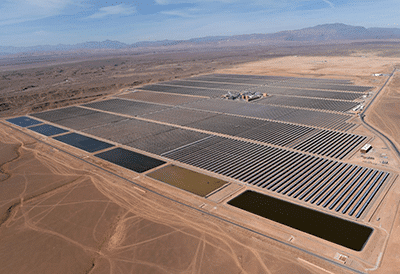
Concerns about energy security and the environmental effects of reliance on hydrocarbon imports have led to an ambitious programme to develop renewable energy sources, including solar energy, in which Morocco is playing a pioneering role. Al-Akhawayn University in Ifrane, high in the Middle Atlas, built the first solar-energy site in Africa to generate electricity using photovoltaics. In 2009, the government announced a USD 9 billion solar energy project that is planned to provide 38 percent of installed power generation by 2020. In November 2011, the World Bank promised USD 297 million in financial assistance to develop a solar power plant that will eventually have a capacity of 500 MW.
Wind energy has been developed at a large wind-farm near Tangier, whose potential production is estimated at about 6,000 MW. In 2013 King Mohammed VI launched a huge project to construct what may be the world’s largest multiple power plant called Noor. The plant is expected to supply electricity to 1.1 million Moroccans.
Trade and Banking
Morocco has a continuing trade deficit. In 2010 it dropped slightly to USD 15.1 billion from its 2009 figure of USD 16.3 billion, but it is predicted to rise steadily to USD 24.6 billion by 2016. This reflects a continuous growth in trade, with exports rising from USD 14 billion in 2009 to USD 17.6 billion in 2010 and a projected 28.3 in 2016. The picture is the same with imports (USD 30.3 billion in 2009, 32.6 billion in 2002, 52.8 billion in 2016, figures IMF Report 2011). In short, Morocco is well positioned for trade, even though it is out of balance.
The exchange rate is guided by the Bank al-Maghrib (BAM), which intervenes in the market to maintain a target range, around a fixed central rate pegged to a basket of currencies comprising the euro (80 percent) and the USD (20 percent). It fixes the daily rates for the foreign currencies on the basis of variations in the value of the basket. The dirham is fully convertible only for current-account transactions, although foreign-exchange accounts are permitted.
Tanger-Med
The Tangier Exportation Free Zone (TEFZ) is a protected free-trade area of 345 hectares where international companies can operate tax-free. It is built around the Tanger-Med container port (see Infrastructure). By July 2009 there were 352 companies in the TEFZ, with automotive and aeronautics companies occupying a leading position. The Renault-Nissan plant, which was inaugurated in February 2012, is intended to export 90 percent of the vehicles it builds (initially between 150,000 and 170,000 a year, rising to 340,000 after a second phase to be completed in 2013).
Banking
The central Bank is the Bank al-Maghrib (BAM), whose headquarters are in Rabat. It was founded in 1959 to replace the Banque d’Etat du Maroc (set up in 1906 under the Algeciras Agreement). Also in 1959, the colonial-era coinage, the Moroccan franc, was replaced by the dirham, and the BAM was put in charge of issuing currency. A subsidiary, the Dar al-Sikka (Mint), was created in March 1987 to handle the manufacture of banknotes and coins. The BAM holds foreign-currency reserves and is responsible for administering monetary policy and supervising the activities of retail banks and credit institutions.
In 2012, the BAM oversaw the activities of 27 licensed banks, six offshore banks, 19 consumer-credit companies, and various other financial institutions (e.g., leasing companies, real-estate-loan companies).
Stock exchange
The Casablanca Stock Exchange was founded in 1929 as the Office de Compensation des Valeurs Mobilières. It became a modern stock exchange in 1967 and is now the third largest exchange in Africa. It has two main indexes: Masi (Moroccan All Shares Index), which tracks the performance of all listed companies, and Madex (the Most Active Shares Index). In June 2011, there were 79 listed companies, with a market capitalization of USD 53 billion. Daily trading in the first six months of 2011 ranged between USD 36 million and USD 5 million.
Work Force and Labour Migration
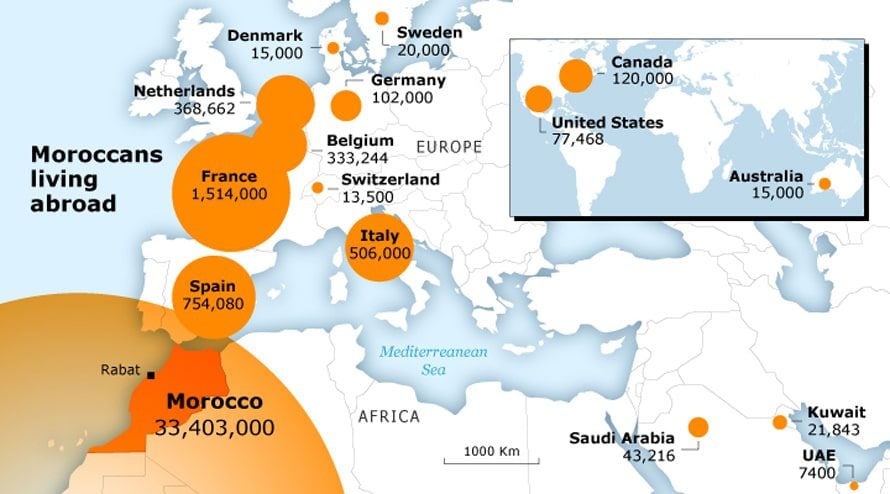
Photo: Fanack
The labour force represents about half of the total population of Morocco (49.5 percent in 2010, 50.7 percent in 2008, and 51 percent in 2001) and about the same in terms of the working-age population (51.5 percent in 2010 and 53 percent in 2008 and 2001). In 2008, the last year for which complete figures are available, about 41.5 percent of the employed population consisted of wage earners, followed by self-employed (about 56 percent), and employers (2.5 percent). There is a significant percentage of unpaid workers (engaged mainly in family work; figures from the World Bank).
Unemployment is estimated at 10 percent of the total labour force, about the same for men and women, although statistics for the informal economy and rural areas are inaccurate. It is considerably higher (22.5 in 2009) among the younger generations (aged 15-24), where the figures are skewed in favour of women (19.4 percent unemployed as compared to 23 percent for men in 2009). The labour force is growing rapidly: in 2010, it was 11,386,087, a 13 percent rise from 10,016,473 in 2001.
Morocco has signed many of the International Labour Organization (ILO) core conventions: 29 (Forced Labour, 1930), 98 (Right to Organize and Collective Bargaining, 1949), 100 (Equal Remuneration for Work of Equal Value, 1951), 105 (Abolition of Forced Labour, 1957), 111 (Discrimination in Employment and Occupation, 1958), 138 (Minimum Age for Employment, 1973), 182 (Worst Forms of Child Labour Convention, 1999).
The first Moroccan unions were formed in the French settler community during the Protectorate, but they soon began to recruit Moroccans until stopped by the Protectorate authorities. Trade unions played an important part in the nationalist struggle and wielded considerable influence after independence. Since then, the movement has split, and there are now five main union confederations in Morocco, often aligned with a political party:
• The Moroccan Labour Union (Union Marocaine du Travail, UMT), the largest in the private sector, claims to have no political affiliation, although it is often said to have ties to the monarchy.
• The Democratic Confederation of Labour (Confédération Démocratique du Travail, CDT), is the strongest in the public sector. It was aligned with the USFP until 2002, when its secretary general created his own political party to contest the parliamentary elections.
• The General Union of Moroccan Workers (Union Générale des Travailleurs Marocains, UGTM) is affiliated with the Istiqlal party.
• The National Labour Union of Morocco (Union Nationale du Travail Marocain, UNTM) is based among workers in public education, health, construction, textiles, and agriculture. It is affiliated with the Islamist party, the PJD.
• The Democratic Federation of Labour (Fédération Démocratique du Travail, FDT), which broke away from the CDT in 2003, is linked to the USFP.
Under the Constitution, workers have the right to join trade unions and to strike (Article 29), although there are provisions for the right to join to be limited under the law, and civil servants are excluded by other legislation. Less than 6 percent of the labour force is unionized.
Employees are governed by the 2003 Labour Code. This incorporates into law various ILO-conventions on maternity and the minimum working age, prohibits employers from sacking workers for legitimate union organizing, and recognizes the right to collective bargaining.
There are severe restrictions, particularly on collective bargaining, which can be conducted only by a union with at least 35 percent of the elected employee delegates. Furthermore, it is not clear whether public servants (e.g., teachers and water and forestry workers) are included in collective-bargaining arrangements and whether domestic and agricultural workers are definitely excluded because they are not covered by the Labour Code.
The Labour Code emphasizes the need for ‘flexibility’ to make Morocco more attractive to outside investors, and unions object that this makes it easy for employers to hire temporary staff. Workers engaging in picketing and public demonstrations are liable to criminal prosecution (see International Trade Union Confederation).
Public-service unions have complained of deteriorating working conditions for civil servants, and medium-sized manufacturing concerns often provide poor health and safety conditions; trade unions have begun to organize in the call-centre sector, where they complain about poor working conditions.
Labour migration
Moroccans have long migrated for economic reasons. In the mid-19th century people from the countryside moved to developing cities on the coast, especially Rabat, Essaouira and Tangier. By the late 19th century, the population of Tangier consisted largely of people of Rifi origin. Rifis also provided an early wave of migrants outside Morocco, when they began a pattern of seasonal migration for work on the new French estates that were established in western Algeria in the mid-19th century.
These two patterns of migration, within Morocco and beyond its borders to European-controlled areas, have continued. The bidonvilles around the main coastal cities appeared in the 1920s, and labour migration to France began around the same time. Rabat grew from 80,000 to 115,00 people between 1931 and 1936, most of whom were housed in the bidonvilles. Rifi migration to Algeria involved about 10 percent of the entire male population of the Rif in 1931.
After World War II, migration increased rapidly. The independence of Algeria cut off that labour market, and France itself became the main destination until the late 1960s, when a combination of labour turmoil there and demand elsewhere in Europe brought new destinations: Belgium, Germany, the Netherlands, and Spain.
This was encouraged by the government, which hoped to build up the expertise and training of the workforce at no expense. Unfortunately, most of the migrants were initially employed in manual labour, although they did help to underpin the Moroccan economy. By the early 1970s, foreign-exchange remittances covered 18 percent of the total import bill, and in the Rif, 31 percent of households relied on migrants as their main source of income.
This was the case in all three of the main migration belts: the Rif Mountains, the Sous Valley, and the southern oases. Numbers continued to rise: in 2005, the latest year for which full statistics are available, there were 1,396,280 Moroccan migrants in the European Union countries, with France and Spain (both about 461,000) at the top of the table, followed by Italy, the Netherlands, and Germany.
By 2011, the total number reported had risen to 1,444,000, although that figure excludes France, for which data are lacking (statistics from Eurostat).
Illegal migration
The Strait of Gibraltar is only 14 kilometres wide, and the Spanish enclaves of Ceuta and Melilla provide jumping-off points on the African side. As a result, the Strait is the focus of an extensive illegal migration trade in Moroccans and people originating in sub-Saharan Africa; the latter group has grown rapidly in the past decade and a half.
In 2004, the Moroccan government claimed to have prevented irregular emigration attempts by at least 26,000 people, of whom 17,000 were of sub-Saharan origin. That same year, the Spanish authorities intercepted 15,675 undocumented boat migrants, of whom about 55 percent were Moroccan and 43 percent from sub-Saharan Africa.
In 1999, the figures were 81 and 2 percent, respectively. The crossing is made in small fishing boats or speedboats, by hiding in trucks, or by using forged papers. Crossing the Strait of Gibraltar in small boats is dangerous, and many people die trying. One official calculation is that 1,035 migrants died between 1999 and 2003, though the real figure is probably higher.
Sub-Saharan Africans cross the Sahara overland, usually via Niger and Algeria. The first wave was fleeing war in the Democratic Republic of Congo, the Republic of the Congo, Sierra Leone, Liberia, and Ivory Coast, but since 2000, economic migrants have arrived from West Africa (e.g., Nigeria, Senegal, Mali, and Ghana).
Because it is difficult to enter Europe, many settle in Morocco rather than return home: Tangier, Casablanca, and Rabat provide jobs in the informal sector, although migrants face xenophobia from the Moroccan population and an aggressive government response. Although some are clearly refugees in terms of the 1951 Geneva Convention, Moroccan authorities do not generally provide permanent protection (see the Migration Policy Institute).
Remittances
The first migrants fully intended to return to Morocco after they had earned enough, but increasingly large numbers settled permanently in Europe. Although some countries allowed them to acquire citizenship, Moroccan law stipulates that no one born in Morocco or of Moroccan parentage can lose Moroccan citizenship. Consequently, they have maintained close links and are classified by the government as Moroccans resident abroad. They make up a large proportion of arrivals at Moroccan airports (47 percent in 2011, see the Ministry of Economy and Finance).
This is an enormous economic resource for Morocco, as migrant remittances have continued to rise. In 2011, remittances totalled USD 7.01 billion, making Morocco the eleventh largest receiver of remittances in the developing world (World Bank data).
Tourism

Tourism is a key element in the Moroccan economy. It has grown rapidly over a long period, from 2,602,000 tourism arrivals in 1995 to 9,299,000 in 2010, making it the 24th largest tourist market in the world and the second largest among the Arab countries, after Egypt (Saudi Arabia excluded, because of the specialized nature of the hajj).
In 2005, Morocco had the second largest market share (21.4 percent) of African tourism (after South Africa). It dwarfs all other countries in the Maghreb and brings in huge amounts of money: receipts per annum rose from USD 1.5 billion in 1995 to USD 9.1 billion in 2011. Tourism employs directly 918,000 people, which is projected to rise to 1.3 million by 2021.
Tourism is supported by a highly developed infrastructure. Tourist capacity increased from 143,000 beds in 2007 to 184,00 in 2011 (data from Ministry of Economy and Finance). The basis of this growth is a highly diverse market. The climate and cultural heritage provide a general framework into which niche attractions can be fitted.
Golf is one such niche market: it has enjoyed royal patronage since early in the reign of Hassan II and hosts several international championships. Another is skiing: the resort at Oukaïmeden in the Atlas Mountains, 80 kilometres from Marrakesh, is the highest ski resort in Africa, at an elevation of 2,600 to 3,200 metres, reached by both chairlift and donkey.
There is a network of health spas and ecotourism and adventure trips into the desert and Atlas Mountains. Most foreign tourists come from Europe, with the largest percentage from France (20 percent), followed by Spain, Britain, Germany, and Belgium. Most temporary visitors are Moroccans who live abroad and return to visit their families from time to time: they represented 49 percent of arrivals in 2009 (data from Tourism Department).
There is a substantial Arab market for tourism; about 6 percent came from other Arab countries, almost entirely from the Gulf. Tourism has faced some important difficulties recently: in 2011, the total number of arrivals increased less than 1 percent, although revenues held up; tourism receipts had been projected to grow in 2011 by 13 percent (IMF Report 2011). In the first half of 2012 the slippage continued, but the crisis began to abate by the autumn.
For the future, the government plans for investment of USD 20 billion in the tourism sector by 2020, under a project called Vision 2020. Most of this investment (80 percent) is supposed to come from the private sector. The aim is to attract 11.5 million tourists in 2014 and make Morocco a top-twenty world holiday destination.
Economic Imbalances
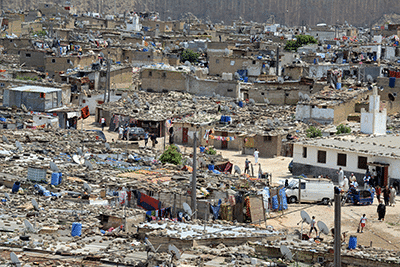
Morocco is a rapidly developing country, but there are huge imbalances in the ways in which wealth is distributed. Nationally, the poor have benefited much less than the richer sectors of society from the economic growth of the last twenty years, and inequality has increased.
The correlations of poverty with other social factors are striking. There is a very unequal distribution on a regional basis: in general, the more urbanized provinces along the Atlantic coast are richer (see Regional development), and the provinces of the former Spanish Sahara in particular have benefited from low population and a huge injection of capital investment (see Income distribution and poverty).
There are clear imbalances by sector: agricultural workers are over-represented in poor groups, and the informal sector, while it is very dynamic, is distinctly poor, employing over half of the active urban population. Another factor is gender: women are, in general, less well educated than men, and when they head the household, as many do, the level of household poverty is much higher (see Family structure).
Latest Articles
Below are the latest articles by acclaimed journalists and academics concerning the topic ‘Economy’ and ‘Morocco’. These articles are posted in this country file or elsewhere on our website:


